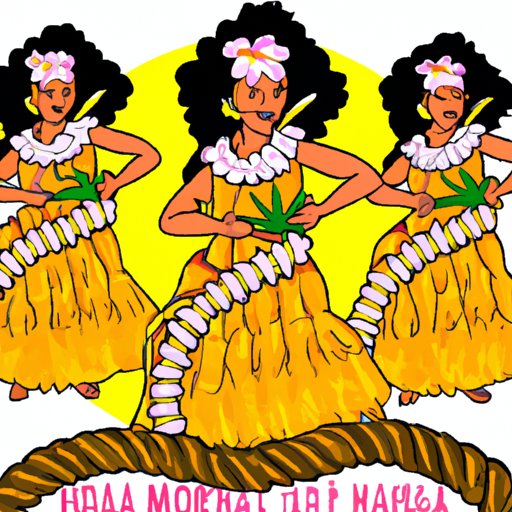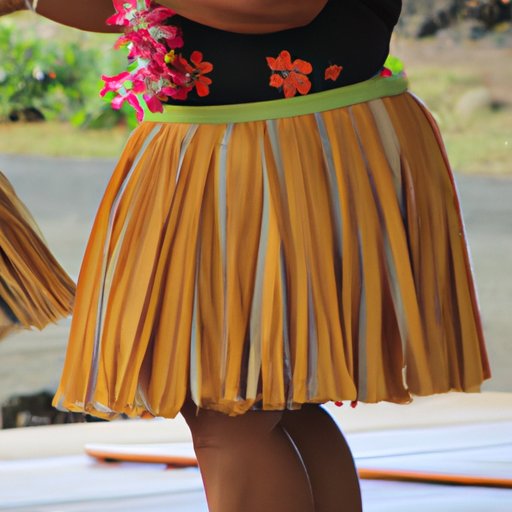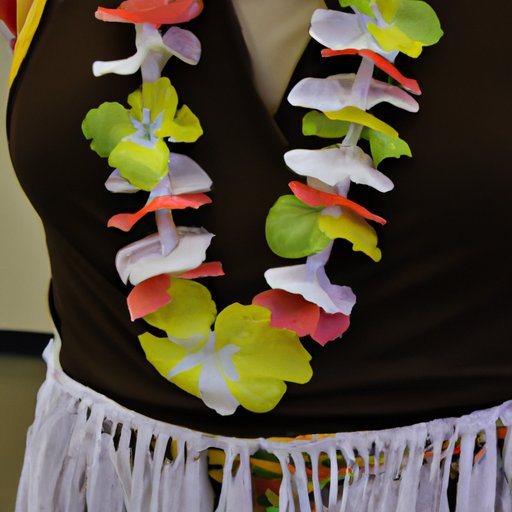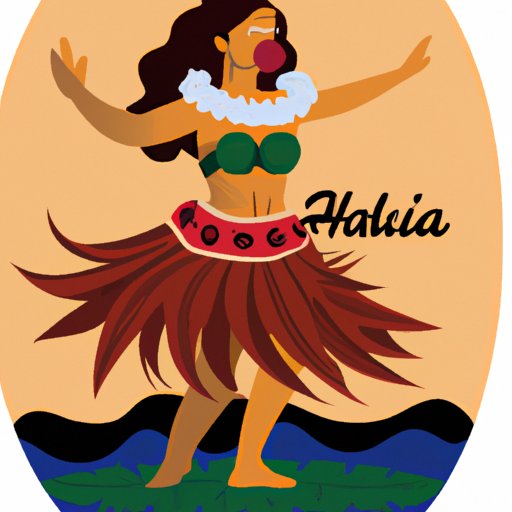Introduction
Hula dancing is an ancient Hawaiian tradition that has been passed down through generations. It is a form of storytelling that uses graceful hand movements and body postures to tell stories of love, passion, and nature. This article will explore the history and cultural roots of hula dancing, the basics of this traditional dance form, and the costumes and props used in performances. We’ll also take a look at some of the most notable hula dancers from the past and present and celebrate the music that inspires hula dancing.

History of Hula Dancing: How the Ancient Hawaiian Tradition Evolved
The history of hula dancing dates back centuries to when it was first performed by ancient Hawaiian people. According to legend, hula was created by the goddess Laka and was used to express gratitude and honor the gods. Over time, it evolved into a form of entertainment and was used to tell stories of love, nature, and culture. Hula eventually spread throughout Polynesia, and today it is still practiced in many parts of the world.
As hula dancing evolved, so did its costumes and props. Traditional hula costumes were made from natural materials such as leaves, bark, and feathers. Props such as drums, rattles, and gourds were used to accompany the dance. In the 19th century, missionaries began to introduce Western instruments such as guitars and ukuleles, which are now commonly used in hula performances.

Exploring the Polynesian Cultural Roots of Hula Dancing
Hula dancing is deeply rooted in Polynesian culture and traditions. The movements and gestures used in hula reflect the culture’s values and beliefs. For example, the swaying of the hips is said to represent the ocean’s waves and the movement of the arms symbolizes the wind. Additionally, different types of hula represent different aspects of life in Hawaii, such as family, religion, and nature.
Performing hula is seen as a way to honor one’s ancestors and pay respect to Hawaiian gods. It is also seen as a form of prayer, with each movement representing a specific prayer or offering. Traditionally, hula was only performed for special occasions such as weddings, funerals, and religious ceremonies.
What Is Hula? Breaking Down the Basics of This Traditional Dance Form
Hula is a traditional Hawaiian dance form that combines graceful hand and body movements with chanting and singing. The steps and postures used in hula are based on the motions of everyday activities, such as gathering food and fishing. There are two main types of hula: kahiko, which is the ancient style of hula, and ‘auana, which is the modern version. Both styles use various hand and body movements to tell stories.
In addition to the two main types of hula, there are several other styles, including hula ‘olelo (storytelling), hula ni’o (interpretive dance), and hula ku’i (improvised dance). Hula is typically accompanied by traditional Hawaiian instruments such as ukuleles, drums, and gourds, and songs sung in Hawaiian or English.

A Look at Hawaiian Costumes and Props Used in Hula Dancing
Costumes are an important part of hula dancing, as they help to enhance the story being told. Traditional hula costumes are usually made from natural materials such as leaves and bark. They may also include feathered headdresses, leis, and other decorations. Props such as drums, rattles, and gourds are often used to accompany the dance.
Today, many hula performers wear more modern costumes, such as brightly colored skirts and Hawaiian shirts. These costumes help to further emphasize the story being told and can be tailored to suit the theme of the performance.
Spotlight on Notable Hula Dancers Through the Ages
Throughout history, there have been many notable hula dancers who have helped to shape and influence the art form. One of the most famous hula dancers of all time is King Kalākaua, who was known for his skill and artistry. He is credited with reviving the hula tradition after it was suppressed by missionaries in the 19th century.
Today, there are many influential modern-day hula dancers. Among them are Keali’i Reichel, Mark Keali’i Ho’omalu, and Vicky Holt Takamine. All three are renowned for their skill and dedication to keeping the ancient art form alive.
Celebrating the Music That Inspires Hula Dancing
Music plays an important role in hula dancing. Traditional hula songs tell stories and convey emotions, and the music helps to set the mood for the performance. Traditional Hawaiian instruments such as ukuleles, drums, and gourds are often used in hula performances. The lyrics are typically sung in Hawaiian or English, depending on the type of hula being performed.
Today, hula music is often a blend of traditional and modern styles. Popular songs used in hula performances include contemporary Hawaiian music, folk songs, and even pop songs. The music helps to create a unique atmosphere that enhances the story being told through the dance.
Conclusion
Hula dancing is an ancient Hawaiian tradition that has been passed down through generations. It is a form of storytelling that uses graceful hand movements and body postures to tell stories of love, passion, and nature. This article explored the history and cultural roots of hula dancing, the basics of this traditional dance form, and the costumes and props used in performances. We also looked at some of the most notable hula dancers from the past and present and celebrated the music that inspires hula dancing.
Hula dancing is an important part of Hawaiian culture, and it has become a beloved art form around the world. It is a beautiful way to express emotion and connect with the past, and it is sure to continue to inspire and delight audiences for many years to come.
(Note: Is this article not meeting your expectations? Do you have knowledge or insights to share? Unlock new opportunities and expand your reach by joining our authors team. Click Registration to join us and share your expertise with our readers.)
